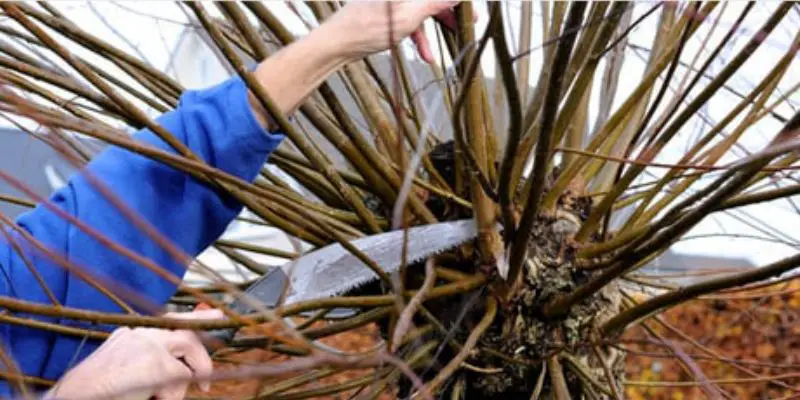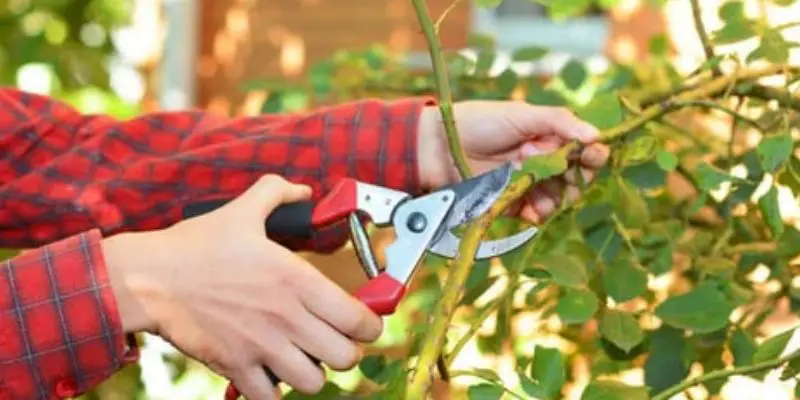Trumpet vines create stunning vertical interest in the garden with their fast, aggressive climbing stems covered in orange or red trumpet-shaped blooms. However, without diligent pruning, trumpet vines can easily become an unruly, invasive mess. By learning proper pruning techniques, you can keep trumpet vines under control, encourage abundant flowers, and highlight their natural beauty. In this guide, you will learn how to prune trumpet vines.
An Introduction to Pruning Trumpet Vines
Trumpet vines grow vigorously in warm conditions, producing long rambling stems reaching 30 feet or more if left unrestrained. Regular pruning provides the following benefits:
- Keeps growth contained within its supporting structure
- Maximizes flower production by pruning at the right times
- Maintains a visually pleasing shape and prevents dense tangles
- Allows light and air circulation deep inside to renew interior branches
- Rejuvenates old plants through occasional renewal pruning
- Encourages new basal growth to replace old deteriorating stems
With the right pruning approach, trumpet vines thrive for decades, showcasing their bold seasonal floral displays.
When to Prune Trumpet Vines
Time pruning to avoid accidentally removing developing flower buds:
- Prune repeatedly blooming varieties just after peak flowering ends in summer.
- For once-blooming types, prune immediately after flowering concludes.
- Alternatively, prune only to shape lightly after new spring growth emerges.
- In cold zones, cut back remaining stems in late fall to prevent dieback.
Avoid pruning when preparing to bloom or already in flower to maximize your floral show.
Tools Needed for Pruning Trumpet Vines
Having quality tools makes pruning trumpet vines easier:
- Bypass hand pruners for smaller stems
- Loppers for cutting thicker wood
- Pole pruners or shears to reach high growth from the ground
- Garden shears for quickly shaping formal vines
- Sharp, clean sterilized blades that make smooth cuts
- Ladder for safely reaching tops of tall vines
- Heavy gloves and long sleeves to protect against sap reactions
Sharp tools ensure easy, safe pruning of aggressive trumpet vines.
How to Prune Trumpet Vine
Follow these tips when pruning established trumpet vines:
- Sterilize pruning tools with disinfectant spray or wipes before each session.
- Remove all dead, damaged, and diseased stems back to healthy wood.
- If needed, cut back wayward stems straying from their support using reduction cuts above healthy buds.
- Head back fast growing shoots by 1/3 to encourage branching and flower bud formation.
- Thin dense interior growth to improve light and air penetration.
- Continually clean tools between cuts to prevent bacterial spread.
With the proper technique, trumpet vines respond well to judicious pruning.
Training Young Trumpet Vines
Establishing ideal growth habits in young vines requires careful pruning:
- Select one or two main stems to retain as leaders. Remove competing shoots.
- Tie leaders neatly onto their support using plant ties or velcro strips.
- Pinch back tips of fast growing stems to promote branching against the support.
- Remove side shoots growing outward to concentrate growth onto leaders.
- Cut back overly enthusiastic vertical shoots by half.
With early training pruning, trumpet vines develop tidy climbing structure as they mature.
Pruning Overgrown Trumpet Vines
Old, neglected trumpet vines often outgrow their spaces and flower poorly. Rejuvenate overgrown plants:
- Cut back lateral shoots to reduce width. Remove some entirely to open interior.
- Shorten main leaders by 2 to 5 feet using reduction cuts to manageable length.
- Clear undergrowth around the base and remove basal suckers competing with main vines.
- Provide temporary support for cut back stems while new growth establishes.
- Water and fertilize to aid rapid recovery and vigorous regrowth.
Even very overgrown trumpet vines can be retrained to good health through rejuvenation pruning.
Pruning Damaged Trumpet Vines
Harsh weather or other factors can damage trumpet vines. Follow these repair pruning tips:
- Remove any completely broken stems back to main branches using proper pruning technique.
- For partially broken stems, prune back to healthy wood above a side shoot or bud.
- Monitor for pests and disease in wounded areas and remove affected tissue.
- Avoid excessively pruning damaged vines. Allow gradual regrowth over years to reestablish.
- Provide temporary support for cut back stems during regrowth.
With careful repair, even significantly damaged trumpet vines can make full recoveries.
Avoiding Common Trumpet Vine Pruning Errors
When pruning trumpet vines, be sure to avoid:
- Removing developing flower buds in spring before they bloom.
- Allowing multiple competing leaders rather than selecting main stems.
- Failing to prune regularly leading to dense, tangled growth.
- Not sterilizing tools which spreads potential disease between stems.
- Leaving stubs after making cuts which can die back further.
- Overpruning leaves vines vulnerable to sunscalding and shock.
With proper timing and technique, trumpet vines thrive under pruning.
Special Considerations for Trumpet Honeysuckle
The trumpet honeysuckle offers similar large orange blooms but on a less aggressive woody vine more amenable to containment. Adjust your pruning approach:
- Prune only lightly to shape honeysuckle vines after flowering concludes.
- Remove older less productive stems judiciously over successive years to encourage fresh growth.
- Limit hard pruning to outward straying branches or very overgrown plants requiring rejuvenation.
With a gentler touch, trumpet honeysuckles require only minimal pruning to maximize their ornamental qualities.
Conclusion
While trumpet vines grow easily in warm climates, their vigorous nature demands regular pruning to keep their growth in check and flowering prolific. By pruning trumpet vines after blooming subsides, training new growth properly, and rejuvenating neglected plants, trumpet vines thrive under your care. Take time to prune your trumpet vines at least once per year, and they will reward you with their stunning vertical floral interest against fences, arbors, and pillars for years to come.
Frequently Asked Questions on How to Prune Trumpet Vines
How often should I prune my trumpet vine?
Prune at least once yearly in summer after flowering ends. Repeat bloomers may require additional light pruning to shape in early spring before blooming resumes.
How much can I prune off a trumpet vine at one time?
Limit overall pruning to no more than 30% of the total vine mass in a single session. This prevents excessive stress. For hard rejuvenation pruning, spread over 2-3 years.
What is the best way to control trumpet vine growth and invasiveness?
Regular pruning to reduce width, remove basal suckers, and keep vines in bounds of their support structure is key. Also monitor the root system for unwanted spread via underground runners.
Should I prune off trumpet vine seed pods after flowering?
Yes, snip off spent flower clusters once blooms fade before seed pods form. This directs energy into more blooms instead of unwanted reseeding.
Can I prune trumpet vines myself or do I need a professional?
Home gardeners can usually prune shorter trumpet vines under control. However arborists are recommended for very mature, woody vines or pruning high off the ground.
How long does it take trumpet vines to recover from aggressive pruning?
Expect at least 1-2 months of regrowth before trumpet vines flower again following hard pruning. With proper aftercare, they regain vigor surprisingly quickly.

Michael Glenn is a certified arborist and horticultural expert with over 15 years of experience in the landscape industry. His passion for plants and trees has led him to become a sought-after authority on pruning and trimming techniques. Glenn’s in-depth knowledge of proper pruning methods, timing, and tools has helped countless homeowners and professionals maintain healthy, aesthetically pleasing gardens and landscapes.
In addition to sharing his pruning expertise through practical tips, step-by-step guides, and expert advice, Glenn is also a respected author of pruning tool buying guides. His comprehensive reviews and comparisons ensure readers can make informed decisions when investing in quality loppers, pruning shears, saws, and other essential equipment. With a deep understanding of plant biology and sustainable practices, Glenn’s writing empowers audiences with the knowledge needed to properly care for green spaces.





